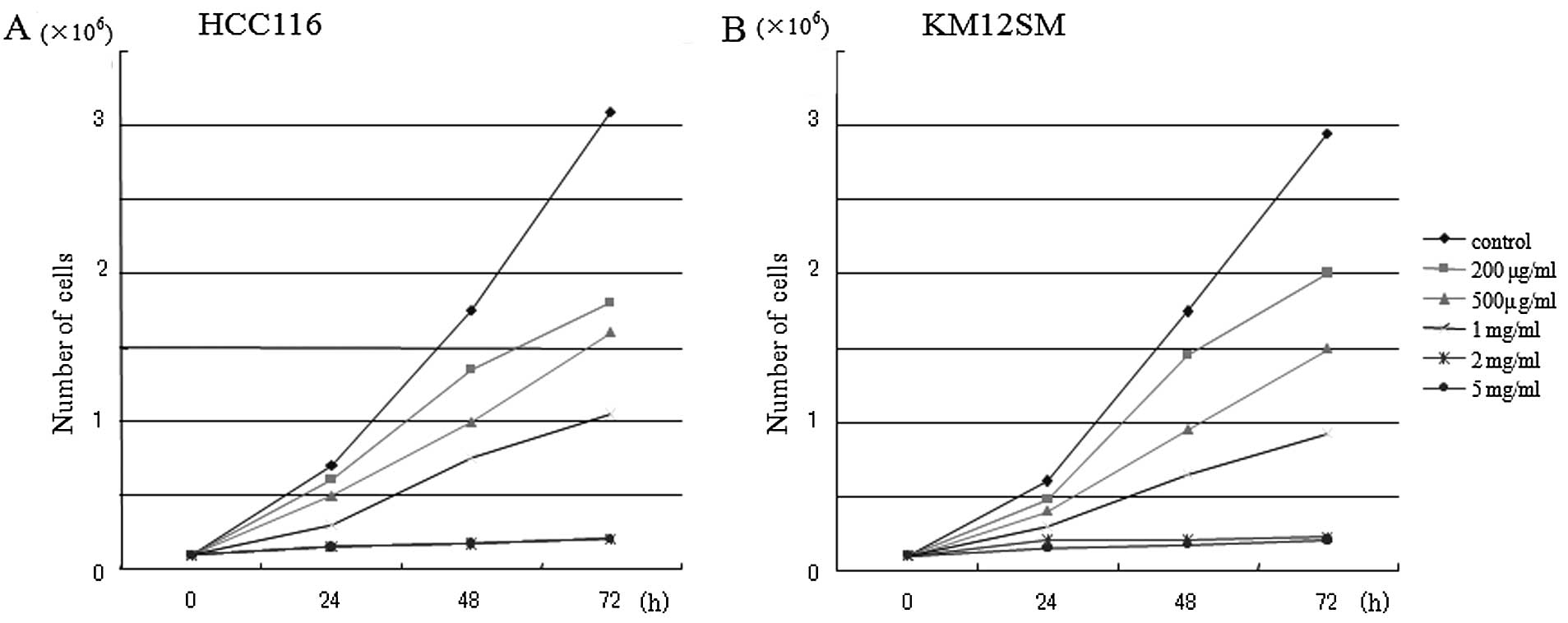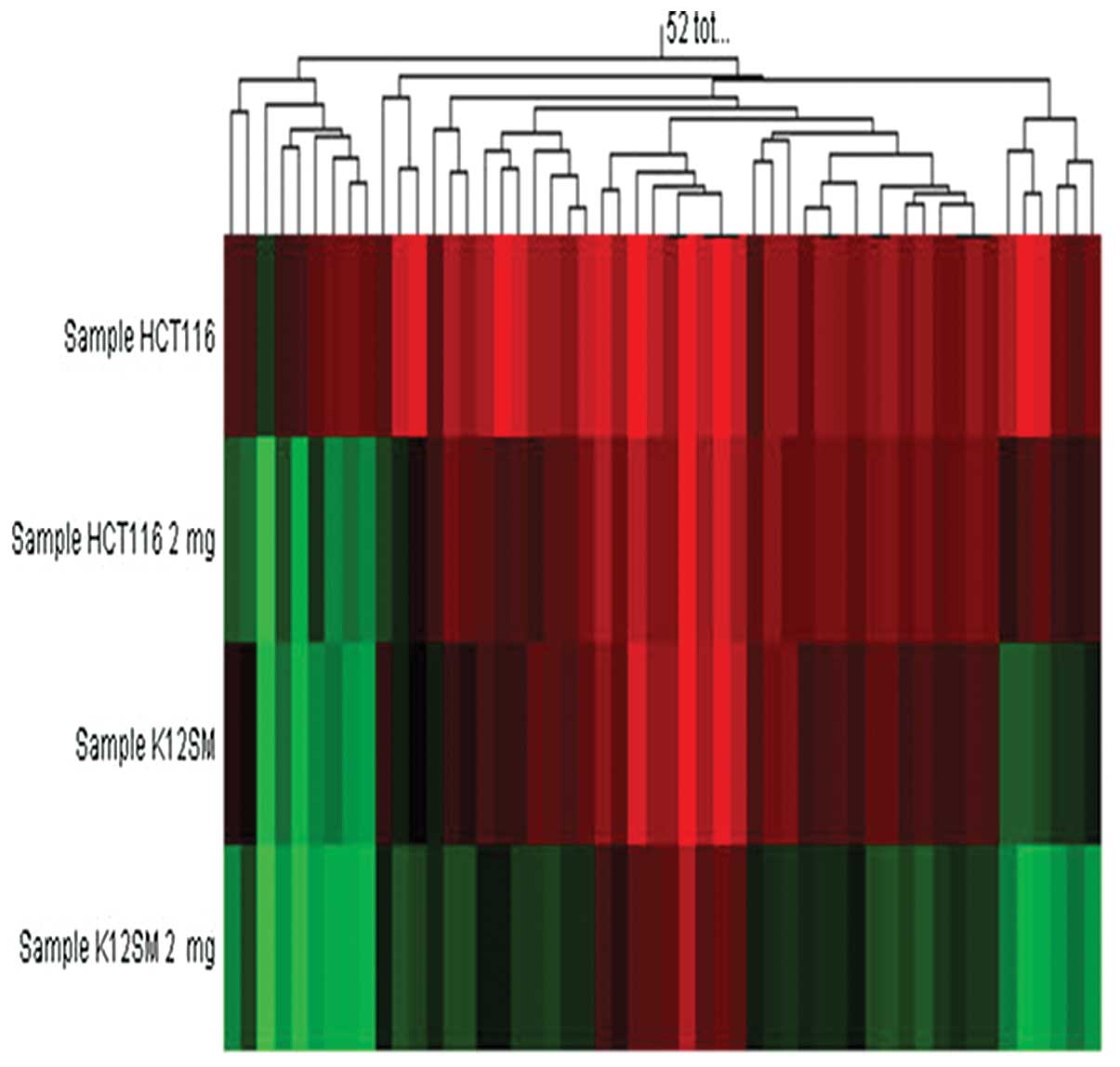|
1
|
Burzynski SR: Antineoplastons: biochemical
defense against cancer. Physiol Chem Phys. 8:275–279.
1976.PubMed/NCBI
|
|
2
|
Tsuda H, Hara H, Eriguchi N, Nishida H,
Yoshida H, Kumabe T and Sugita Y: Toxicological study on
antineoplaston A-10 and AS2-1 in cancer patients. Kurume Med J.
42:241–246. 1996. View Article : Google Scholar : PubMed/NCBI
|
|
3
|
Tsuda H, Sata M, Kumabe T, Uchida M and
Hara H: The preventive effect of antineoplaston AS2-1 on HCC
recurrence. Oncol Rep. 10:391–397. 2003.PubMed/NCBI
|
|
4
|
Ogata Y, Tsuda H, Matono K, Kumabe T,
Saitsu H, Hara H, Akagi Y, Araki Y, Sata M and Shirouzu K:
Long-term survival following treatment with antineoplastons for
colon cancer with unresectable multiple liver metastasis: report of
a case. Surg Today. 33:448–453. 2003. View Article : Google Scholar : PubMed/NCBI
|
|
5
|
Burzynski SR, Weaver RA, Lewy RI, Janicki
TJ, Jurida GF, Szymkowski BG, Khan MI and Bestak M: Phase II study
of antineoplaston A10 and AS2-1 in children with recurrent and
progressive multicentric glioma. a preliminary report. Drugs R D.
5:315–326. 2004. View Article : Google Scholar : PubMed/NCBI
|
|
6
|
Liau MC, Lee SS and Burzynski SR:
Hypomethylation of nucleic acids: a key to the induction of
terminal differentiation. Int J Exp Clin Chemother. 2:187–199.
1989.
|
|
7
|
Samid D, Shack S and Myers CE: Selective
growth arrest and phenotypic reversion of prostate cancer cells in
vitro by nontoxic pharmacological concentrations of phenylacetate.
J Clin Invest. 91:2288–2295. 1993. View Article : Google Scholar
|
|
8
|
Liu L, Shack S, Stetler-Stevenson WG,
Hudgins WR and Samid D: Differentiation of cultured human melanoma
cells induced by the aromatic fatty asid phenylacetete and
phenylbutyrate. J invest Dermatol. 103:335–340. 1994. View Article : Google Scholar : PubMed/NCBI
|
|
9
|
Melchior SW, Brown LG, Figg WD, Quinn JE,
Santucci RA, Brunner J, Thüroff JW, Lange PH and Vessella RL:
Effect of phenylbutyrate on proliferation and apotosis in human
prostate cancer cells in vitro and in vivo. Int J
Oncol. 14:501–508. 1999.PubMed/NCBI
|
|
10
|
Shack S, Chen LC, Miller AC, Danesi R and
Samid D: Increased susceptibility of ras-transformed cells to
phenylacetate is associated with inhibition of p21ras
isoprenylation and phenotypic reversion. Int J Cancer. 63:124–129.
1995. View Article : Google Scholar : PubMed/NCBI
|
|
11
|
Yu KH, Weng LJ, Fu S and Gore SD:
Augmentation of phenylbutyrate-induced differentiation of myeloid
leukemia cells using all-trans retinoic acid. Leukemia.
13:1258–1265. 1999. View Article : Google Scholar : PubMed/NCBI
|
|
12
|
Marks PA, Richon VM and Rifkind RA:
Histone deacetylase inhibitors: inducers of differentiation or
apoptosis of transformed cells. J Natl Cancer Inst. 92:1210–1216.
2000. View Article : Google Scholar : PubMed/NCBI
|
|
13
|
Waldbillig R and Burzynski SR: Mechanism
of action, uptake, and gene array studies on the antineoplastic
agent phenylacetylglutamine (PG) in human glioma cells U-87. Neuro
Oncol. 5:3092003.
|
|
14
|
Goldberg AD, Allis CD and Bernstein E:
Epigenetics: a landscape takes shape. Cell. 128:635–638. 2007.
View Article : Google Scholar : PubMed/NCBI
|
|
15
|
Bernstein BE, Meissner A and Lander ES:
The mammalian epigenome. Cell. 128:669–681. 2007. View Article : Google Scholar
|
|
16
|
Sieber OM, Heinimann K and Tomlinson IP:
Genomic instability - the engine of tumorigenesis? Nat Rev Cancer.
3:701–708. 2003. View
Article : Google Scholar : PubMed/NCBI
|
|
17
|
Schramke V and Allshire R: Hairpin RNAs
and retrotransposon LTRs effect RNAi and chromatin-based gene
silencing. Science. 301:1069–1074. 2003. View Article : Google Scholar : PubMed/NCBI
|
|
18
|
Pickett MA, Everson JS, Pead PJ and Clarke
IN: The plasmids of Chlamydia trachomatis and
Chlamydophila pneumoniae(N16): accurate determination of
copy number and the paradoxical effect of plasmid-curing agents.
Microbiology. 151:893–903. 2005.PubMed/NCBI
|
|
19
|
Vousden KH and Lu X: Live or let die: the
cell’s response to p53. Nat Rev Cancer. 2:594–604. 2002.
|
|
20
|
Burzynski SR: The present state of
antineoplaston research (1). Integr Cancer Ther. 3:47–58. 2004.
View Article : Google Scholar : PubMed/NCBI
|
|
21
|
Burzynski SR: Aging: gene silencing or
gene activation? Med Hypotheses. 64:201–208. 2005. View Article : Google Scholar : PubMed/NCBI
|
|
22
|
Holliday R and Ho T: DNA methylation and
epigenetic inheritance. Methods. 27:179–183. 2002. View Article : Google Scholar : PubMed/NCBI
|
|
23
|
Hannon GJ and Beach D:
p15INK4Bis a potential effector of TGF-β-induced cell
cycle arrest. Nature. 371:257–261. 1994.
|
|
24
|
Serrano M, Hannon GJ and Beach D: A new
regulatory motif in cell-cycle control causing specific inhibition
of cyclin D/CDK4. Nature. 366:704–707. 1993. View Article : Google Scholar : PubMed/NCBI
|
|
25
|
Jen J, Harper W, Bigner SH, Bigner DD,
Papadopoulos N, Markowitz S, Willson JKV, Kinzler KW and Vogelstein
B: Deletion of p16 and p15 genes in brain tumors. Cancer Res.
54:6353–6358. 1994.PubMed/NCBI
|
|
26
|
Kamb A, Gruis NA, Weaver-Feldhaus J, Lie
Q, Harshman K, Tavtingian SV, Stockert E, Day RS, Johnson BE and
Skolnick MH: A cell cycle regulator potentially involved in genesis
of many tumor types. Science. 264:436–440. 1994. View Article : Google Scholar : PubMed/NCBI
|
|
27
|
Berg T, Guo Y, Abdelkarim M, Fliegauf M
and Lübbert M: Reversal of p15/INK4b hypermethylation in
AML1/ETO-positive and -negative myeloid leukemia cell lines. Leuk
Res. 31:497–506. 2007. View Article : Google Scholar : PubMed/NCBI
|













